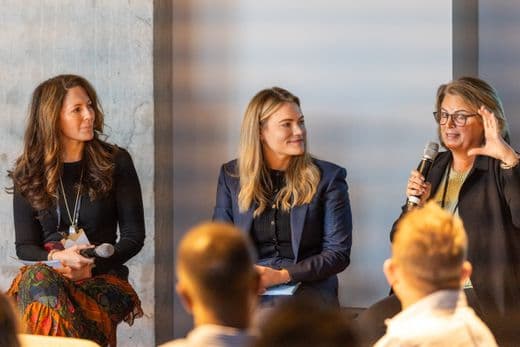Compass Staff |
Perhaps no industry’s workforce has the number of challenges — or the number of opportunities — as healthcare. A person could start in one position, then earn a degree and move up within a health system. Or, that person could experience burnout and abandon the entire industry within a year. The intensity of long shifts, upsetting outcomes, and simply not knowing how to get from career point A to career point B has brought many healthcare workers to the breaking point.
Q: What’s really at the core of healthcare’s retention problem?
The importance and sacredness of what we do in healthcare — it takes a burden on people. And so one of the biggest challenges from an HR standpoint is maintaining that flame of purpose. And how do you do that? You have to continue to support, so that folks don’t get burned out, so they don’t get so discouraged with the tragedies of life and the tragedies of the situations that occur in our hospital settings and our clinics and our surgical settings, so that they continue to see the good and the positive.
Healthcare is a challenging profession. You work long hours. And you do so in such a high-stakes environment that HR is critically important to maintaining the support factors and the support functions to keep that flame lit in our healthcare caregivers. So you’ve got to have intentionality around how you want to recruit talent, how you want to attract talent, and how you want to retain talent in your environment. That intentionality has to be, first and foremost, a value in successful HR functions and HR departments. Because if you’re not creating an environment that is re-establishing that flame and giving individuals the rest and relaxation to recharge so as to continue that purpose, it’s not going to be a long-term calculation for success.
Q: What should HR leaders do to address this challenge?
Number one is understanding your workforce, understanding what their needs and their aspirations are, and listening to them. You’ve got to be able to hear what they’re saying. You’ve got to be able to decipher and discern and hear what they’re saying. And then what do you do with that information? And how do you handle that going forward? It’s not necessarily what you say to people that will be remembered. It’s how you made them feel that will be remembered.
Organizations provide the environment, they provide a paycheck, they provide some benefits, but do they provide an ongoing connection to that individual? That learning and development of growth is so important, because we all want to be better tomorrow than we were today. And I would challenge any organization in any HR department: What are you doing to encourage your folks to take that next step? A lot of organizations traditionally focus on succession planning or advancement upwards, but I would make the argument that there’s also a lot of advancement that could go horizontal and or diagonally.
Q: When you’re helping these HR departments that are considering adopting a skilling or L&D program, how do you advise them when they run up against roadblocks at the top?
Number one: I would hope that the organization has an executive at the table from HR. [You need] an executive in HR that is sitting at the table where strategic initiatives and vision are being discussed, along with those from the current and the future. If you’re going to be effective in HR, particularly in learning and development, you’ve got to know where the organization is going in the future. So how do you do that? Your HR executive and the executives develop the strategy, develop the imperatives, and develop the vision, and then that has to be translated and communicated to the L&D folks in HR. They can establish where the core competencies are going to need to be in the future, because they may be different, and probably are different to where they are today. Then you work in the middle to develop the programs and various pipelines.
Q: We do want to talk about predictive pipelines, the ability for a healthcare institution to say that it will have X number of a certain kind of healthcare worker by Y time. In the post-pandemic era, do you see HR and L&D leaders focusing more on long-term strategic workforce planning?
Yes, I see various pipelines of development, and those pipelines are short-term, mid-term, and long-term, and each one of them comes with a degree of planning, a degree of executional guiding principles that allow you to get from where you’re at today to where you need to be tomorrow, at the same time providing excellent quality care in the interim. And so, to have an effective leader of an organizational development program, you must know where you’re going. You must have individuals who understand the more immediate needs of having some pipelines of development, and you also need to understand that it’s a combination.
A lot of times, organizations just focus on getting external folks to come in. But I go back to that school-at-work example that I shared with you. This was a long-term play for inside development. If you can develop your folks who have been with you and who know you and you know them, you’ll be amazed. You’d be surprised how much more strongly there is a common commitment to the vision — all rowing in the same direction by providing internal folks the stepping stones necessary to get from where they’re at today in their career to where they want to be tomorrow.



